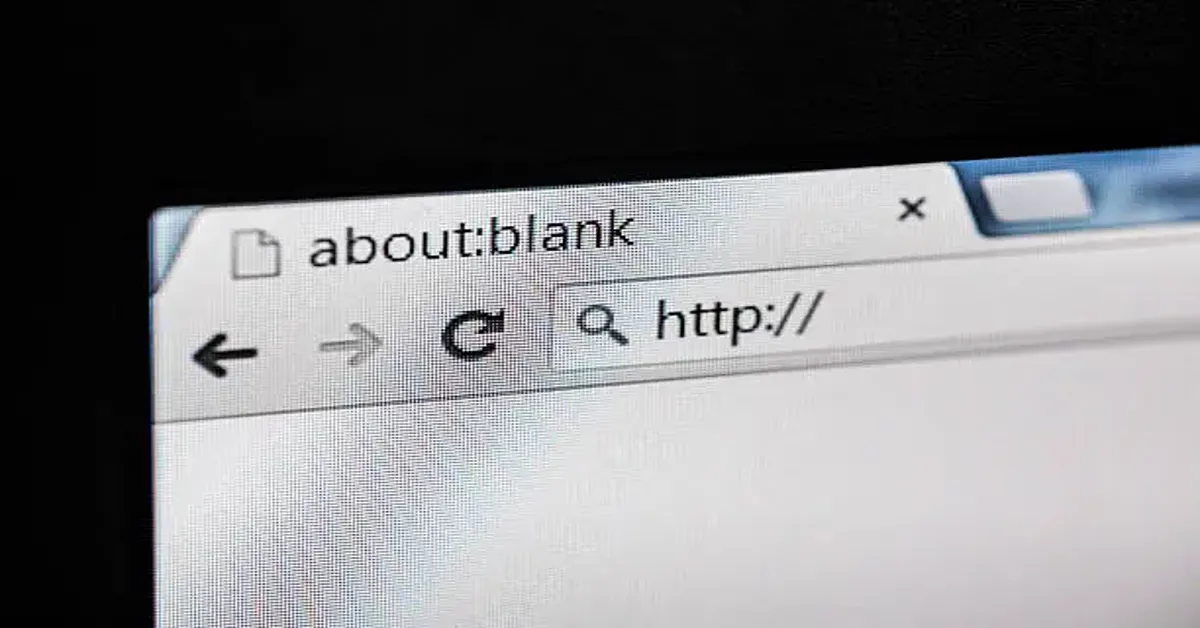Introduction
The term “about:blank” is quite enigmatic, but it’s an intrinsic browser feature that plays a very significant role in contemporary web browsers. The white blank page, devoid of the URL, which you get when opening a new tab or window, is about:blank. In essence, it is not one of these internet web pages that might be inaccessible, but a native instruction running in browsers such as Google Chrome, Firefox, Safari, Edge, and Opera.
Browsers access internal settings or functionalities using the “about” URI scheme. Some examples are about:settings, about:downloads, and about:plugins. Among them, the most ubiquitous and commonly misunderstood is about:blank.
Is about:blank a Virus or Malware?
No, about:blank is not a virus, malware, or threat to your system either way. It’s a native browser component, not an installed or downloaded item from the internet. Users freak out when they suddenly encounter about:blank, but there’s nothing to be worried about.
But malware and potentially unwanted programs (PUPs) sometimes hijack browser preferences to cause a browser to open up about:blank instead of your homepage or search engine. In such instances, about:blank is only the symptom, not the disease.
In short:
- about:blank is harmless.
- It doesn’t harm your computer.
- It’s not installed—it’s part of your browser.
Why You’re Seeing about:blank
There are plenty of reasons you may see aboutblank:
- You opened a new browser tab or window.
- Your browser has been configured to launch about:blank as the homepage.
- A web application or link instructed the browser to temporarily load aboutblank.
- The browser prevented suspicious content and loaded aboutblank as a temporary page.
- A browser add-on or plugin failed to install properly.
- In all of these instances, about:blank is performing its function.
Why Would Anyone Make about:blank Their Homepage?
Tech-savvy users tend to make aboutblank their homepage by design because it’s:
- Fast – No wait for outside sites.
- Secure – No outside content = no advertisements, tracking, or exploits.
- Smooth – Distraction-free and clean start page.
- Optimized – Especially useful on older or low-spec machines where browser speed is an issue.
How to make aboutblank your homepage:
Click on your browser settings.
Look for the “Homepage” or “Startup” options.
Make aboutblank the homepage URL.
How to Delete aboutblank If You Don’t Need It
If you’re opening approximately:blank and do not want to, you may change your homepage settings with little difficulty:
On Google Chrome:
Navigate Settings > On startup
Choose Open a specific page or set of pages
Remove aboutblank and replace with your favorite website.
On Mozilla Firefox:
Navigate Settings > Home
In Homepage and new windows, choose a preferred web page instead of aboutblank.
On Microsoft Edge:
Open Settings > Start, home, and new tabs
Set Open these pages to something other than aboutblank.
If still lingering, you might have to reset your browser preferences or scan for malware.
When about:blank Indicates an Underlying Issue
While aboutblank itself is not harmful, frequent unexplained instances may indicate other issues, such as:
- Corrupted browser data
- Blocked or failed web content
- Outdated browser versions
- Malicious extensions
In these cases, perform the following actions:
- Clear browser cookies and cache
- Disable or remove suspicious extensions
- Run a complete malware scan with a decent antivirus
- Restore your browser to its default setting
Is about:blank Helpful to Developers and Power Users?
Yes. To web developers, aboutblank is a blank page or test environment for scripts. It’s most often employed in iframes, popups, and redirects to load content dynamically.
Developer use cases are typical for:
- Opening blank tabs for controlled navigation
- Resetting a frame without reloading the entire page
- Keeping loaded content or tracking scripts at bay
Its reliability and simplicity are reasons why it is a favorite in the complicated frameworks of the application
Making about:blank secure
With aboutblank now secure, there are also means through which cyber attacks can trick you with it
Phishing attacks could take the form of aboutblank pages presented with imitation white screens and overlays.
Browser hijackers could divert you away from aboutblank to unwanted websites or advertisements containing malware
Therefore you should:
Never download on suspicious websites
Use reputable browser security and antivirus add-ons
Be wary of add-ons that demand too many privileges
Remember: about blank isn’t the issue—it’s sometimes used as a tool by issues.
Frequently Asked Questions
Can I disable about:blank permanently?
No, it is a browser native feature and can’t be removed. You can, however, configure your browser not to load it when you start your browser.
My browser keeps opening with about:blank. Why does this occur?
You may have set it as your home page. Or, your browser may be resetting or having startup problems.
Can about:blank block websites?
Not directly. Certain browsers may show abou:blank instead of loading a site if there has been malicious activity or blocked scripts.
Is about:blank found in all browsers?
Yes. Implementation varies slightly, but the function of aboutblank is the same in all major web browsers.
Does about blank use internet data?
No, since it’s a local page that the browser loads, it doesn’t use any internet bandwidth.
Final Thoughts:
Finally, about:blank is nothing more than an empty, internal browser page. It is not evil and not inherently useful to the average user unless it is configured so to be. If it comes up unexpectedly, something else is going on, but aboutblank is never responsible.
